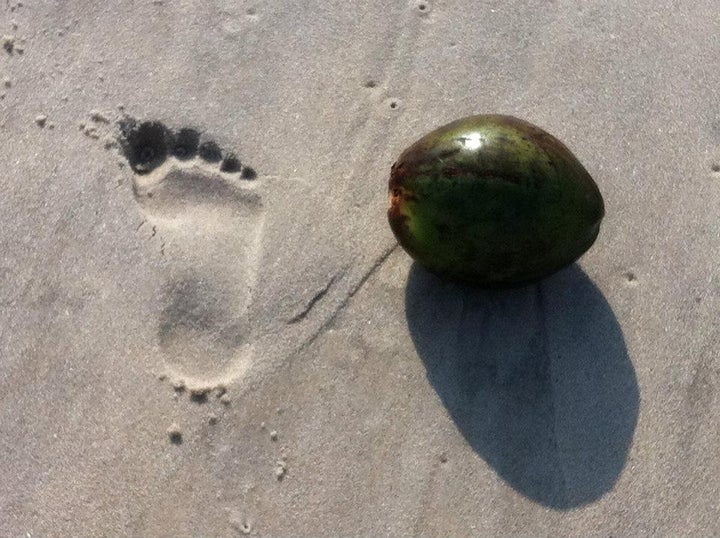
Fifty five people died and other 427 disappeared during the catastrophic weather event of September 20 in Puerto Rico, according to official estimates. But well over a month after Maria, major media outlets estimate the death toll in over a thousand people. Electricity hasn’t come back for nine out of ten residents yet, and 3.4 million islanders are stuck in emergency mode, exhausted and in the dark, resisting as survivalists without a steady vital flow of power and clean water.
#Idiewhereyouvacation
Federal emergency management officials acknowledge the magnitude and duration of the outage is unprecedented. What nobody can satisfactorily explain is why the government of Puerto Rico, under tight fiscal control by a Financial Oversight and Management Board appointed in Washington, was able to contract for $300 million and in record time a two person corporation named White Fish Energy Holdings, with no personnel or experience to restore power to the entire island. The company was created only two years ago in Whitefish, Montana, birthplace of the U.S. Secretary of the Interior, Ryan Zinke, by an acquaintance of him, and was funded by the private equity firm of Joe Colonnetta, a Trump supporter since primary season. In an emergency, the Puerto Rico Energy Power Authority (PREPA) is supposed to rely on mutual aid from public US energy companies. It is unclear why officials broke protocol and hired a private contractor that is further crippling the economy and indirectly contributing to more deaths.
The water situation is no better. Systems are down in one third of the territory and many treatment plants are out of commission. Even islanders who do have access are being warned to boil water with chlorine tablets first, but without power in homes it is impossible for many. FEMA has provided less than 10 percent of the drinking water needed for the territory in a month, and people drinking from water sources contaminated with toxins and bacteria had started to succumb. Due to lack of access to adequate life systems, a medical crisis is unfolding in Puerto Rico, with casualties that are not attributable to the hurricane but to the subsequent local and federal mismanagement of the emergency.
#Newsfromnowhere
Governor Ricardo Rosselló, son of ex-Governor Pedro Rosselló, a Democrat who aspires to close the deal for his pro-statehood party, came to power without a real chance to take control of the island’s economy and more as a rubber stamp after the Puerto Rico Oversight, Management and Economic Stability Act of 2016 appointed a fiscal control board. His party is responsible for an important part of the debt and a lot of the corruption that sank Puerto Rico, but the opposition Democratic Popular Party is not very different. He managed Irma with apparent efficiency and even scored some political points by providing emergency assistance to the affected neighboring islands. But once it was clear Maria had a collision path with Puerto Rico, he embarked on a seemingly endless press conference and soon enough all the plans and provisions that were supposedly in place to respond in the aftermath of the hurricane vanished into thin air, exposing a lack of substance, character and leadership that opened the door for his political opponent, Carmen Yulín, Mayor of San Juan, to pick an easy and necessary fight with Donald Trump to grab attention to the real magnitude of the crisis in Puerto Rico, which was, and still is, downplayed by both the local and federal government.
Worse than being in a colony in financial crisis hit by the most powerful storm of the century, is to be just that under the presidency of Donald Trump and at the mercy of a local government with nominal power, supervised by an undemocratic fiscal control entity that puts capital over human interests.
When the Governor needed to perform in a historical moment his ability to lead was poor, perhaps eclipsed by an inferiority complex that goes to the heart of the colonial psyche. Ricardo Rosselló didn’t demonstrate control of Puerto Rico because he really never had it. He could have carved some political power by rising to the occasion but, instead of standing up to Trump, he opted for an undignified position that quickly depleted his political capital and further damaged his people.
The superiority complex of Trump was appalling in contrast. Due to indifference, sheer arrogance or a hidden agenda, at first he didn’t even bothered acknowledging the catastrophe and instead spent the weekend after Maria fueling the racial divide in the US by twitting about the NFL protests. When emergency rescue finally reached the island, those efforts clashed head on with the colonial reality. It took the President thirteen days to visit Puerto Rico, once there he took the opportunity to downplay the number of victims and the magnitude of the crisis, basically dedicating the event to self congratulate himself, with the always nodding consent of Governor Rosselló. Then he visited possibly the less impacted town and played for the cameras an odd paper towel throwing game in a church. Oddly, only days after his visit the number of victims was corrected, multiplied by four, and it was established by the general in charge of the tragedy in New Orleans that the present crisis is comparable, or even worse than Katrina.
#orisitPortoRico?
Enraged by the mess of Puerto Rico after his visit, Donald Trump has inflicted insult over injury with degrading remarks against the second class citizens of the colony over and over. Apparently they are good to pay a questionable debt but not good enough to be rescued in times of need. He even mocked the Spanish pronunciation of Puerto Rico during an inaugural act for the Hispanic Heritage Month.
The literal translation for Puerto Rico would be “rich port”, as in Monroe’s Doctrine naval stronghold for a trans-isthmus canal through Central America, dreams of Cuba and global trade in the twentieth century. Timely, Puerto Rico was invaded by military means during the Spanish American War and has been steadily occupied by the United States ever since 1898.
Paradisiac by geography and voluptuous in nature, Puerto Rico is enchanting, musical, whimsical and fertile, yet artificial, toxic and broken after over a hundred years of colonialism. Men of the island have been drafted for every war the United States have fought since World War One. Women were sterilized in mass in the 20th century. Its territory was used as target test ground of heavy artillery for decades, hundreds of thousands of shells and bombs lie under the paradisiac beaches of Vieques and Culebra among dead corals. Its environment and people have endured exposure to all kinds of toxic chemicals. Colonialism has been hard to say the least. The island was suffocating in political limbo and drowning in disaster capitalism when the hurricane season of 2017 turned the page of history at cyclonic speed.
#GreenHope
But as soon as the hurricane hit, networks came to life activating funds and rescue missions. From day one Puerto Rican families, often divided with members out and in the island, took care of their own, and so did friends. Survival mode jumpstarted resistance forces driven by the self determination, self preservation and self pride proper of a nation in its own right. Activists and volunteers made peer to peer information and relief efforts operative real quickly, for example ecokitpuertorico.org organized by Aris Mejias, Yaraní del Valle and Isabel Gandía. Food activists and farmers -like Tara Rodríguez-Besosa, working for fondoderesilienciapuertorico.org- started gathering organic seeds to restart cleaner, stronger and sustainable food systems. Creative professionals Walter Meyer, Jennifer Bolstad, Cristina Roig and Jonathan Marvel of resilientpowerpr.org rapidly organized teams to power up the island from the ground up with solar energy, subverting old paradigms of dependency on fossil fuels and opening up ways for clean energy and water systems. Efforts like these might be modest in scale but they are visionary and absolutely necessary for the future.
By empowering communities with sustainable projects for self reliance and common good, citizens, ecologists, artists, farmers, surfers, organizers and people from all walks of life are coming together with a basic understanding that going back to how things were is not an option. After all, the colonial mirage crumbled and finally failed right before their eyes. One by one all comforts of modern society and basic services collapsed in the catastrophic weather event of the century. Hurricanes were always possible, even probable for Puerto Rico, but there was just not a plan in place to save the people in a worse case scenario. With all systems collapsed, it is clear after over a month that only a green plan to regrow and sustain life makes sense for Puerto Rico, not more debt or exploitation. However, the Senate will sign any day now a “relief” package that consists of more debt for Puerto Rico. Despite conversations with Tesla that were picked up by the Governor after they were in fact prompted by popular demand, the plan seems to be going back to many of the old ways that crippled Puerto Rico in the first place.
At times it seems like vultures are just waiting for locals to vacate, dismay or die, in order to take over. After all, the island has a prime location in the Americas and the enriching promise of its name has paid dividends left and right over the past 500 years to its colonial rulers. This is, however, the right moment to stand up for the embattled island and enable a real solution for its people after they have endured just an awful lot of colonialism and disaster mixed together. Furthermore, they need to deal with global warming in a smart way going forward, because hurricanes like Maria can be more frequent. More shock doctrine and colonialist practices cannot be the solution because colonialism is the main problem. Both locals and their environment deserve to reach livable conditions so they can thrive no matter what political path is in the cards for the US territory going forward: statehood or independence. It is time to fix Puerto Rico and questions of sustainability and sovereignty are crucial for a solution.
